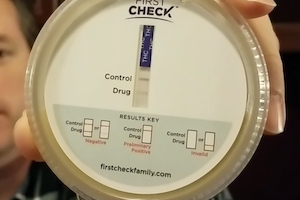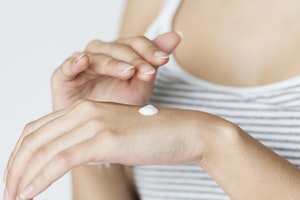How to Take CBD
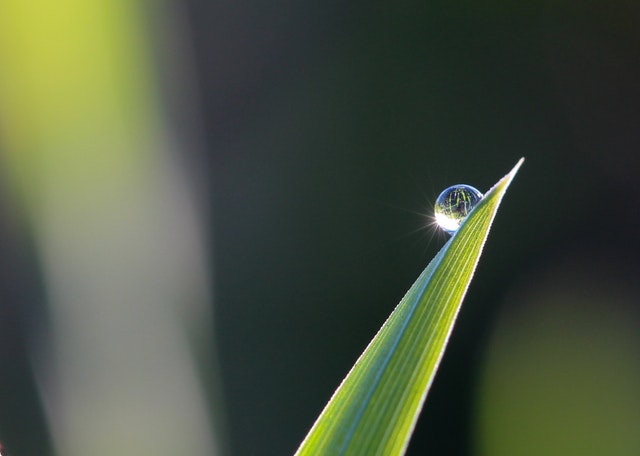
CBD is capturing so much attention for its medical benefits. The Federal Drug Administration in the United States just approved Cannabidiol for treatment of two rare forms of epilepsy which is helping to legitimize CBD as a medically significant compound. Like any new product in the market, people are wondering how to consume it.
What are the most common ways of consuming CBD? There are 4 common ways of consuming CBD:
- Sublingually (under the tongue)
- Ingestion (countless products/recipes available)
- Inhalation (vaping)
- Topically (localized treatment)
Each route of consumption has its advantages and disadvantages so its important for each individual to figure out what works best for them.
Sublingually
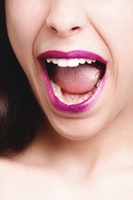 Probably the easiest way for most people to start trying CBD would be to place it under your tongue and let it absorb into your system from there. This route of administration gets the CBD into your system and working very fast; likely within 10 minutes. The only faster route would be vaping. The tissues under your tongue have many blood vessels that are close to the surface which makes it very easy and fast to absorb medications in this area.
Probably the easiest way for most people to start trying CBD would be to place it under your tongue and let it absorb into your system from there. This route of administration gets the CBD into your system and working very fast; likely within 10 minutes. The only faster route would be vaping. The tissues under your tongue have many blood vessels that are close to the surface which makes it very easy and fast to absorb medications in this area.
Another advantage of absorbing CBD under your tongue is that the CBD gets into your system without first going through the liver where a pretty significant amount is lost to metabolism. This means you will likely be able to take less CBD than you would if you were ingesting it.
Some types of sublingual products that are out on the market are CBD oils/tinctures and sprays. Oils, or tinctures, are the most common products for oral absorption. You simply place a drop or two (whatever the product instructions suggest) of the oil under your tongue and avoid swallowing for a minute or two. A spray works essentially the same way. You just spray the recommended number of pumps under your tongue as best you can and let it absorb before swallowing.
The natural flavor of CBD oil is an acquired taste, meaning it probably won’t taste good to you. In order to help with the “earthy” taste, many products come with flavors added to make it more palatable for you. The flavoring should help substantially but don’t be surprised if you still get a hint of the plain CBD flavor. This is considered one of the only major drawbacks to consuming CBD sublingually. It may help to have something that tastes good to you ready to chase the CBD oil down and cleanse your palate.
A closely related product type to these tinctures and sprays are oral applicators. These resemble medical syringes with predefined volumes and concentrations of CBD in them. They are squirted into the mouth between the gums and cheeks. These tissues are similar to under the tongue and allow for high levels of absorption in a short amount of time. There is a pretty powerful video on YouTube of a boy having a seizure and his father administers CBD oil between his gums and cheeks and the seizure stops within about 30 seconds. I didn’t embed the video here because it can be a little disturbing for some people to see a child having such a severe seizure. But it’s amazing to see how fast the medicine is able to absorb and stop the seizure.
Ingestion
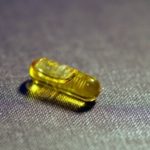 Ingestion involves any form of CBD that is swallowed. There are so many ways you can ingest CBD. People are very creative when it comes to how they can include CBD into various products. CBD gummy bears are an obvious way to get CBD into your system. But how about CBD brownies, honey, lollipops, peanut butter, and coffee to name just a few. You can also find all sorts of recipes that also include CBD in them.
Ingestion involves any form of CBD that is swallowed. There are so many ways you can ingest CBD. People are very creative when it comes to how they can include CBD into various products. CBD gummy bears are an obvious way to get CBD into your system. But how about CBD brownies, honey, lollipops, peanut butter, and coffee to name just a few. You can also find all sorts of recipes that also include CBD in them.
The one big advantage to this route is in disguising the flavor of CBD oil in a larger serving size than a few drops of tincture. When the CBD oil is diluted in a brownie you can’t even taste it. If you are really sensitive to off-flavors and you think you might gag from putting it under your tongue, you might consider CBD edibles as an alternative.
A major drawback to this approach is that when CBD is absorbed from your intestine it goes straight to your liver. According to one study the liver metabolizes about 94% of CBD on the first pass. That means only about 6% of the CBD you ingest is able to make it into your system to help you out. CBD is not cheap so losing 94% of it in your liver makes swallowing CBD less attractive.
Another drawback to ingesting CBD is that it takes a lot longer to get into your system and get to work. The same study mentioned above also said it can take 1 – 5 hours for the majority of CBD swallowed to get into your system. That’s a long time and not really necessary.
A final drawback to swallowing CBD is the fact that controlling the correct dosage can be difficult. If you purchase commercial CBD edible products the dosing should be pretty well controlled and labeled. However, if your making an edible product at home it may be hard to keep the dosing straight. Of the three issues mentioned for ingesting CBD, this is surely the least significant, but it’s worth considering.
Inhalation
 Inhaling CBD is a very popular way of getting CBD into your system for several reasons. Perhaps the most significant is that this is the fastest and most efficient way to get CBD into your system. It bypasses the liver just like sublingual administration does. There is so much surface area in the lungs that it makes it very fast and easy to get CBD into the bloodstream to start working.
Inhaling CBD is a very popular way of getting CBD into your system for several reasons. Perhaps the most significant is that this is the fastest and most efficient way to get CBD into your system. It bypasses the liver just like sublingual administration does. There is so much surface area in the lungs that it makes it very fast and easy to get CBD into the bloodstream to start working.
Inhalation is done most commonly through vaping. If you’re like me, you’ve never used a vape pen or E-cig, but you’ve surely seen these around. Basically, how it works is you put a small amount of liquid/oil into a device. The device heats the liquid to its evaporation temperature and you inhale the vapors into your lungs.
If you have never vaped before you probably wouldn’t want to start just to get CBD into your system. Because vaping is so new there isn’t a lot known about the long-term effects of this practice. A lot of the CBD research that has been done around vaping suggest that if you don’t currently vape, you shouldn’t start just for CBD. Some of the common side effects people experience from vaping are:
- Coughing
- Soar/dry/scratchy throat
- Asthma
- “Vaper’s tongue” (loss of taste)
- Dizziness/Nausea
It would be a shame for someone interested in CBD to start trying to vape it and attribute some of these common vaping side effects to the CBD. If you already vape then these side effects are probably a non-issue for you. But until there is more research about the long-term effects of vaping it’s not a method we’re going to recommend.
Topical Application
 Besides oil, CBD is now available in many forms that can be used on the skin such as ointments, creams/lotions, patches, balms, and salves. Because CBD is a powerful pain reliever, rubbing it on localized areas of pain and soreness can help provide relief. As an anti-inflammatory agent, rubbing CBD products on inflamed joints may provide some relief from arthritis. There is also some research that shows topical CBD products can help fight psoriasis, eczema, cramps, and even headaches. There are lots of ways in which a topical CBD product may be helpful.
Besides oil, CBD is now available in many forms that can be used on the skin such as ointments, creams/lotions, patches, balms, and salves. Because CBD is a powerful pain reliever, rubbing it on localized areas of pain and soreness can help provide relief. As an anti-inflammatory agent, rubbing CBD products on inflamed joints may provide some relief from arthritis. There is also some research that shows topical CBD products can help fight psoriasis, eczema, cramps, and even headaches. There are lots of ways in which a topical CBD product may be helpful.
A couple drawbacks to topical application of CBD are that it can take as little as one hour or as many as 48 hours to produce some relief. That’s a large range that can seem like an eternity for someone who is in pain or discomfort. I may find myself reaching for something else to relieve the pain if it’s taking more than an hour to kick in. Regular application each day, however, can help keep the benefit going once it starts. So if you’re going to try a topical CBD product plan on trying it for an extended period of time before you decide how effective it is.
The other drawback besides how long it takes to work is that it’s almost impossible to say how much you need to put on. Everyone’s skin is a little different and will absorb different amounts of the CBD. Also, everyone’s body will respond differently to the CBD that is absorbed. This fact will probably lead to a lot of trial and error for topical application.
How much CBD should I take
I wish I had the right answer for you but everyone is different. People will respond differently to CBD depending on their age, gender, health, and other factors. The best advice we can give is to follow the directions of the product you select. And start at the low end of the range. Give it a week or so to start working and then kick it up a notch if your tolerating it well but aren’t getting the benefits you expect. The lower the amount of CBD you can get by with, the less it will cost you. So start small and then build up until you’re happy with the results.
Parting thoughts…
There are several ways of using CBD but there’s no real great way to say which one is right for you. If you’re excited about CBD and its potential to help you or a loved one with a relevant condition, you should be. Start with whichever method you think would work best for your situation. Don’t give up after the first attempt. Give it a few weeks and see if the method you selected has worked. Anything new will take some time to get used to. If it just isn’t working for you then try a different method until you find the one that suits you.

